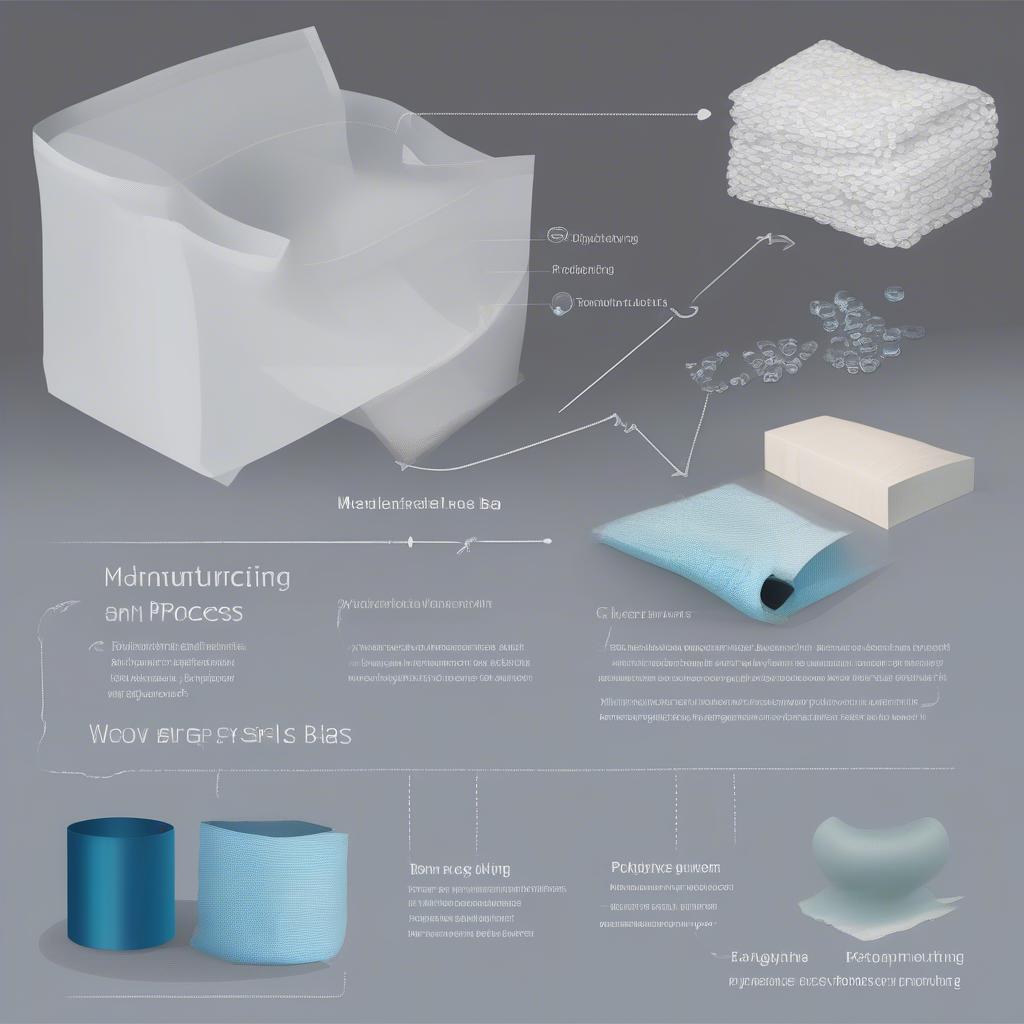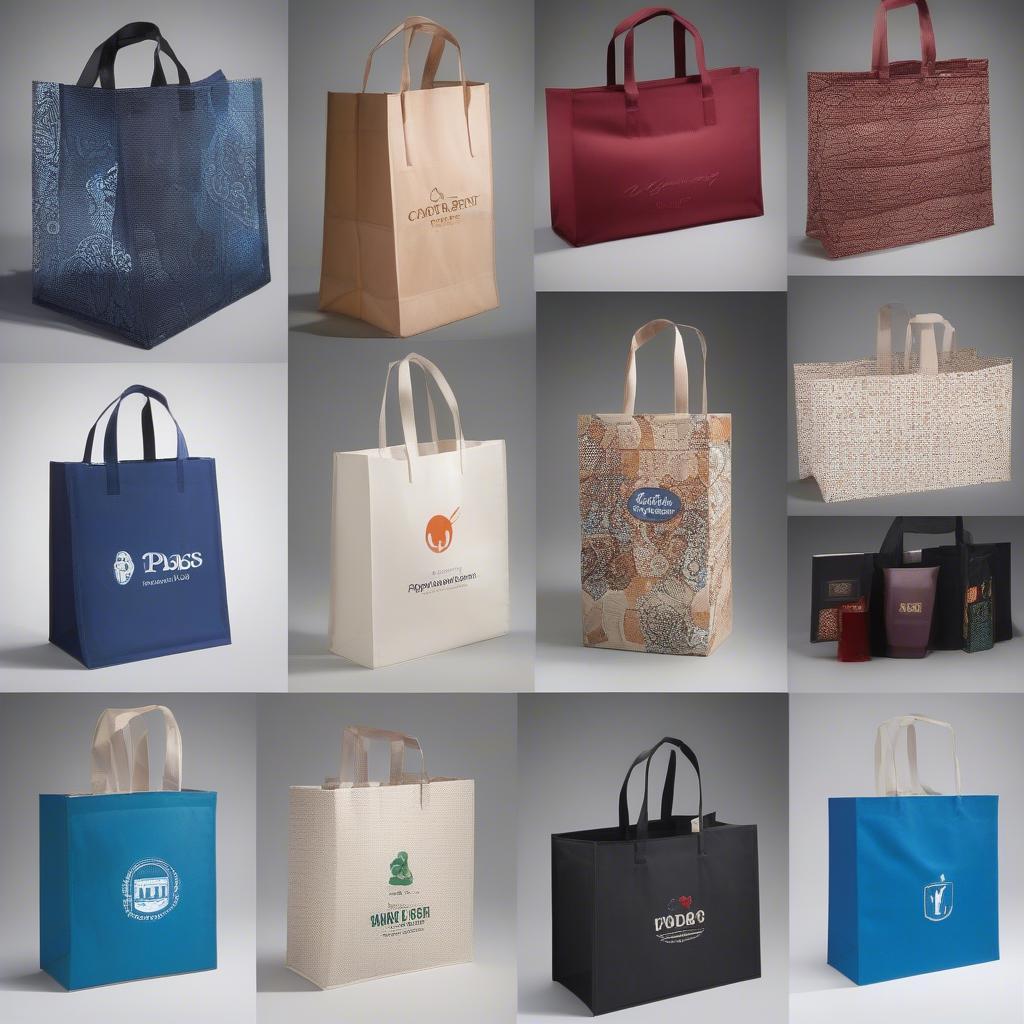Woven Bag
What is a Non-Woven Bag? A Comprehensive Guide
Non-woven bags have become increasingly popular as a reusable and eco-friendly alternative to traditional plastic bags. What exactly is a non-woven bag, and why are they such a sought-after choice? This comprehensive guide delves into the world of non-woven bags, exploring their materials, production process, benefits, and various applications. We’ll also discuss their impact on the environment and why they’re becoming a staple in sustainable living.
 Non-woven bag production process and materials used.
Non-woven bag production process and materials used.
Understanding Non-Woven Fabric
Non-woven fabric, the core material of these bags, is a sheet or web of fibers bonded together by chemical, thermal, or mechanical processes, unlike woven fabrics which involve interlacing yarns. This unique production method gives non-woven materials distinct characteristics, making them ideal for a wide range of applications, including bag production. Non-woven bags are typically made from polypropylene (PP), a thermoplastic polymer known for its durability and resistance to moisture. This material is also readily recyclable, further adding to the eco-friendly nature of non-woven bags.
extra large non woven tote bags
Advantages of Non-Woven Bags
Why choose non-woven bags over other options? They offer a multitude of benefits:
- Durability and Strength: Non-woven fabric is tear-resistant, making these bags ideal for carrying groceries, books, and other items.
- Water Resistance: Their inherent water-resistant properties protect your belongings from unexpected spills or rain.
- Reusability: Unlike single-use plastic bags, non-woven bags are designed for multiple uses, reducing waste and promoting sustainability.
- Cost-Effectiveness: While initially more expensive than plastic bags, their reusability makes them a cost-effective choice in the long run.
- Customizability: Non-woven bags can be easily printed with logos and designs, making them excellent promotional items.
- Breathability: The structure of non-woven fabric allows for air circulation, preventing condensation and keeping contents fresh.
Different Types of Non-Woven Bags
Non-woven bags cater to a diverse range of needs and styles. From simple tote bags for shopping to sophisticated promotional bags for businesses, there’s a non-woven bag for everyone:
- Shopping Totes: These are the most common type, available in various sizes and colors.
- Promotional Bags: Companies often use customized non-woven bags for marketing and branding.
- Gift Bags: These bags add a touch of elegance to gift-giving.
- Wine Bags: Designed specifically for carrying wine bottles, these bags offer both protection and style.
The Eco-Friendly Impact of Non-Woven Bags
One of the most significant advantages of non-woven bags is their positive impact on the environment. They offer a sustainable solution to the global plastic pollution problem. By choosing non-woven bags, you contribute to:
- Reduced Plastic Waste: By replacing single-use plastic bags, you directly reduce the amount of plastic ending up in landfills and oceans.
- Conservation of Resources: The production of non-woven bags requires fewer resources compared to traditional materials like cotton.
- Lower Carbon Footprint: The manufacturing process of non-woven bags generally has a lower carbon footprint than other bag types.
 Environmental benefits of using non-woven bags compared to plastic.
Environmental benefits of using non-woven bags compared to plastic.
What is the lifespan of a typical non-woven bag?
A well-maintained non-woven bag can last for several years, significantly reducing reliance on single-use bags.
non woven tote bags extra large
Are all non-woven bags recyclable?
Most non-woven bags made from polypropylene are recyclable. Check for recycling symbols on the bag.
“Non-woven bags are a game-changer in the packaging industry,” says Sarah Miller, Sustainable Packaging Consultant. “Their versatility, durability, and eco-friendly nature make them a smart choice for both consumers and businesses.”
large shopper tote bag non-woven budget
How are non-woven bags produced?
Non-woven bags are made through a process of bonding fibers together using heat, chemicals, or mechanical methods.
custom extra large non woven polypropylene tote bag
 Showcase different types of non-woven bags available.
Showcase different types of non-woven bags available.
“Choosing reusable bags, like those made from non-woven materials, is a crucial step towards a more sustainable future,” adds David Lee, Environmental Advocate. “Their impact on reducing plastic waste is undeniable.”
In conclusion, understanding what a non-woven bag is and its benefits empowers consumers to make informed choices. Non-woven bags offer a durable, reusable, and eco-friendly alternative to plastic bags, contributing to a cleaner and more sustainable future. Choosing a non-woven bag is not just a shopping choice; it’s a conscious decision to support environmentally responsible practices.
FAQ:
- What are non-woven bags made of?
- Are non-woven bags stronger than plastic bags?
- How long do non-woven bags last?
- Can non-woven bags be recycled?
- Where can I buy non-woven bags?
- Are non-woven bags biodegradable?
- What are the different types of non-woven bags available?
When you need support, please contact us at Hanoi, Vietnam or Tech Avenue, Suite 12, San Francisco, CA 94105, USA. We have a 24/7 customer service team.
